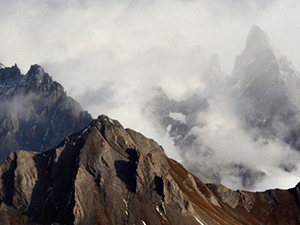ECOSYSTEMS & BIODIVERSITY
LANDSCAPE. TRANSBOUNDARY. COOPERATION. CONNECTIVITY. SPECIES. HABITATS.
The Alpine territory shall remain permeable and liveable for all species by protecting and managing vulnerable and Alpine specific landscapes and ecosystems. Further, transboundary cooperation on ecological connectivity shall be enhances.
The ACB recognized the high-value of ecosystem services and the importance of natural and cultural landscapes for the Alpine area. A common management approach to ensure these functions under climate change will be developed.
Protection and management of landscapes and ecosystems
Peatlands, raised bogs, wetlands, dry meadows, glaciers, rivers, high mountain regions, forests, traditional cultural landscapes as e.g. orchard meadows etc. – the Alpine area offers a wide range of specific natural and cultural landscapes with a great importance for (endangered) species of the flora and fauna.
Regarding existing regulations as well as taking into account the SDGs of the agenda 2030, the AC Protocol on nature conservation and European Landscape Convention forces will be joined in order to protection and manage vulnerable and Alpine specific landscapes and ecosystems.
Transboundary cooperation on ecological connectivity
In the sense of climate change, the need for a proper management of existing areas and the establishment of new areas to cover species, habitats and ecological processes that would no longer be included due to the shifts caused by climate change is even greater. The pathway draws possible steps to be done – also by integrating the spatial planning sector.
ECOSYSTEMS & BIODIVERSITY
LANDSCAPE. TRANSBOUNDARY. COOPERATION. CONNECTIVITY. SPECIES. HABITATS.
The Alpine territory shall remain permeable and liveable for all species by protecting and managing vulnerable and Alpine specific landscapes and ecosystems. Further, transboundary cooperation on ecological connectivity shall be enhances.
The ACB recognized the high-value of ecosystem services and the importance of natural and cultural landscapes for the Alpine area. A common management approach to ensure these functions under climate change will be developed.
Protection and management of landscapes and ecosystems
Peatlands, raised bogs, wetlands, dry meadows, glaciers, rivers, high mountain regions, forests, traditional cultural landscapes as e.g. orchard meadows etc. – the Alpine area offers a wide range of specific natural and cultural landscapes with a great importance for (endangered) species of the flora and fauna.
Regarding existing regulations as well as taking into account the SDGs of the agenda 2030, the AC Protocol on nature conservation and European Landscape Convention forces will be joined in order to protection and manage vulnerable and Alpine specific landscapes and ecosystems.
Transboundary cooperation on ecological connectivity
In the sense of climate change, the need for a proper management of existing areas and the establishment of new areas to cover species, habitats and ecological processes that would no longer be included due to the shifts caused by climate change is even greater. The pathway draws possible steps to be done – also by integrating the spatial planning sector.


